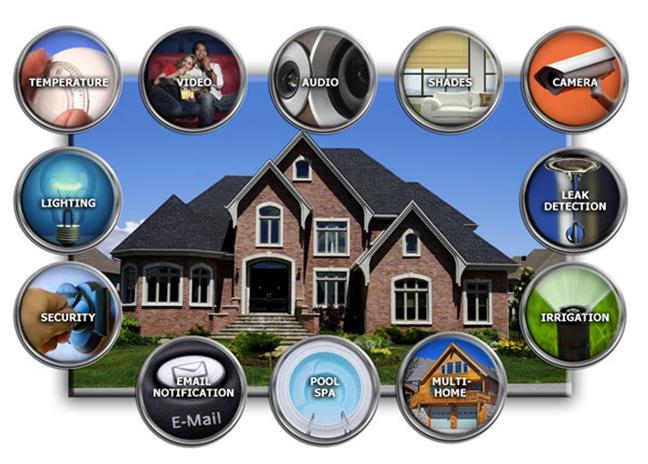Today in the headway of Automation innovation, life is getting simpler and less demanding in all spheres. Home automation is a modern technology that modifies your home to perform different sets of task automatically. Today Automatic frameworks are being favored over manual frameworks. No wonders, home automation in India is already the buzz word, especially as the wave of second-generation homeowners grows, they want more than shelter, water, and electricity.
 The first and most obvious advantage of Smart Homes is comfort and convenience, as more gadgets can deal with more operations (lighting, temperature, and so on) which in turn frees up the resident to perform other tasks. Smart homes filled with connected products are loaded with possibilities to make our lives easier, more convenient, and more comfortable. There is no shortage of possibilities for smart home IoT devices as home automation seems to be the wave of the future. The requirement for Office and Home automation arises due to the advent of IoT, in a big way in homes and office space. The smart home/office gadgets interact, seamlessly and securely; control, monitor and improve accessibility, from anywhere across the globe. These smart automation devices happen to have an interface with IoT. IT automation will be the key to bridging the gap between human limitations and technology’s capabilities. With automation, data can be instantly collected and seamlessly passed between devices as it’s simultaneously analyzed. Home automation is an appealing context for the Internet of Things (IoT), by connecting the IP gateway directly to the Internet or through a home/residential gateway; this system can be managed remotely using a PC, Smartphone, Tablet or other devices.
The first and most obvious advantage of Smart Homes is comfort and convenience, as more gadgets can deal with more operations (lighting, temperature, and so on) which in turn frees up the resident to perform other tasks. Smart homes filled with connected products are loaded with possibilities to make our lives easier, more convenient, and more comfortable. There is no shortage of possibilities for smart home IoT devices as home automation seems to be the wave of the future. The requirement for Office and Home automation arises due to the advent of IoT, in a big way in homes and office space. The smart home/office gadgets interact, seamlessly and securely; control, monitor and improve accessibility, from anywhere across the globe. These smart automation devices happen to have an interface with IoT. IT automation will be the key to bridging the gap between human limitations and technology’s capabilities. With automation, data can be instantly collected and seamlessly passed between devices as it’s simultaneously analyzed. Home automation is an appealing context for the Internet of Things (IoT), by connecting the IP gateway directly to the Internet or through a home/residential gateway; this system can be managed remotely using a PC, Smartphone, Tablet or other devices.
The IoT based Home Automation will enable the user to use a Home Automation System based on Internet of Things (IoT). The modern homes are automated through the internet and the home appliances are controlled. The user commands over the internet will be obtained by the Wi-Fi modems. The Microcontroller has an interface with this modem. The system status is displayed through the LCD display, along with the system data. This is a typical IoT based Home Automation system, for controlling all your home appliances. The smart home market is taking off as IoT device prices come down and the general public comes to understand the benefits of these products. And from smart homes, the next logical step is smart cities, which would take the IoT to the next level. And yet, smart homes are just one small part of our daily lives that the Internet of Things will transform in the coming years.
We have already witnessed some early commercial success in the IoT industry where today, everyone is talking about the Internet of Things which is the “next big” thing in the world of technology. The prospect of 30 billion objects connected to the Internet by the year 2020 is staggering, as the opportunities for new lines of service and new business models grow out of this realm. IoT is based on the inclusion of devices in the world of connected environments. The devices are embedded and connected, based on a unique identity. The IoT devices in Home Automation have the maximum applications in energy. The home heating devices are able to control the temperature of the devices like laptops, tablets or smartphones and all of these appliances, systems, and devices contain sensors that connect them to a network. This is where IoT comes into place, and makes it such an integral part of the home automation. With the help of IoT technology, you can control devices as and when you want.
The beauty of the Home Automation system lies in the fact that the settings are manageable for your smartphones and other remote-control devices. Smart home IoT devices can help reduce costs and conserve energy. The Home Automation segment includes smart lighting, smart TVs, and other appliances. Wearable’s (SmartWatch, fitness brands, smart headphones, smart clothing) are also expected to witness the growth in the future. IoT is really the secret that makes this whole system work. Today in India, nearly 22.5 percent of the consumers surveyed were familiar with the concept of IoT, with maximum awareness seen in the 36-55 age group which clearly indicates that there is an immense opportunity for increased adoption of such technologies. The future of the Home automation market will happen with few key upgradations in the Automation technology. For example, Wireless Automation solutions as well as lowering of price points as the market begins to accept Home automation usage in larger volumes. With an increased internet penetration and data usage, the connected devices segment is expected to witness a huge growth by 2020. Home Automation in India is creating big opportunities, not only for Indian automation companies but also for foreign companies. The rapid development of home-based automation, along with M2M (machine-to-machine) communications will continue to create billions of new connected objects over the next 5 years and beyond.
a








